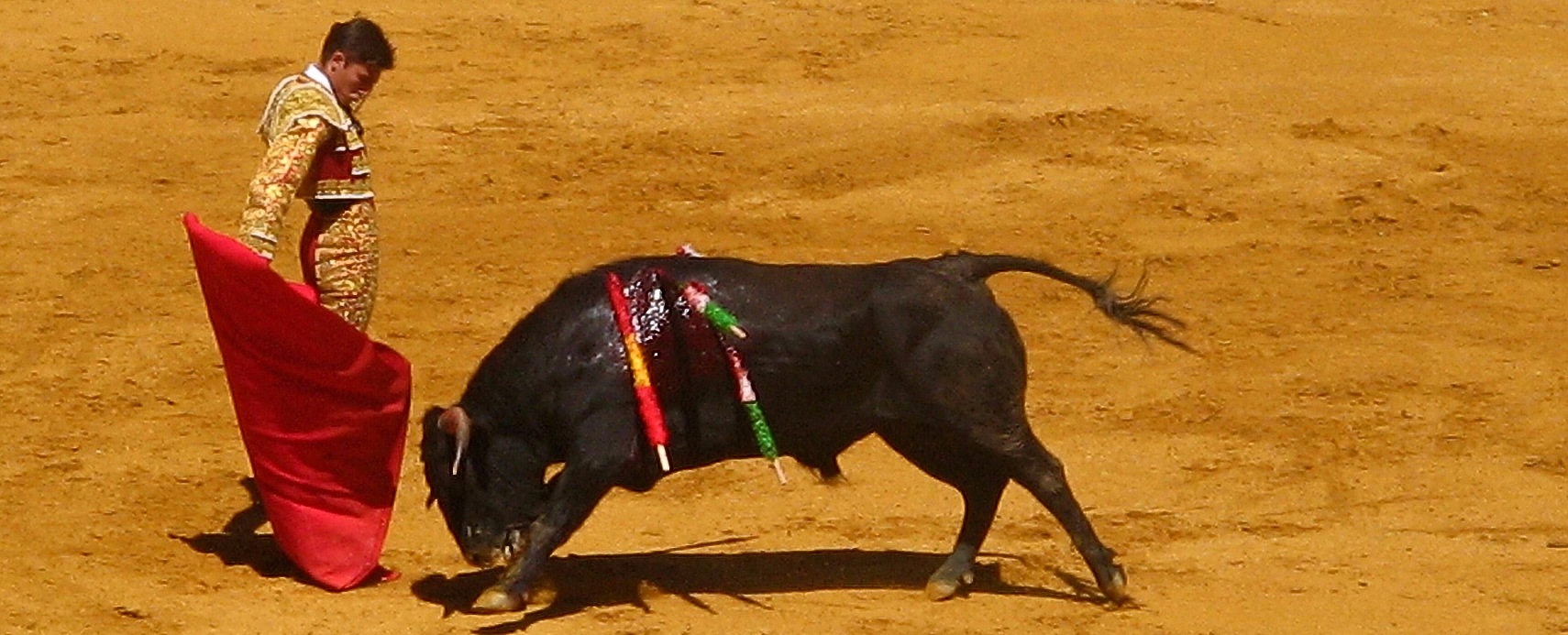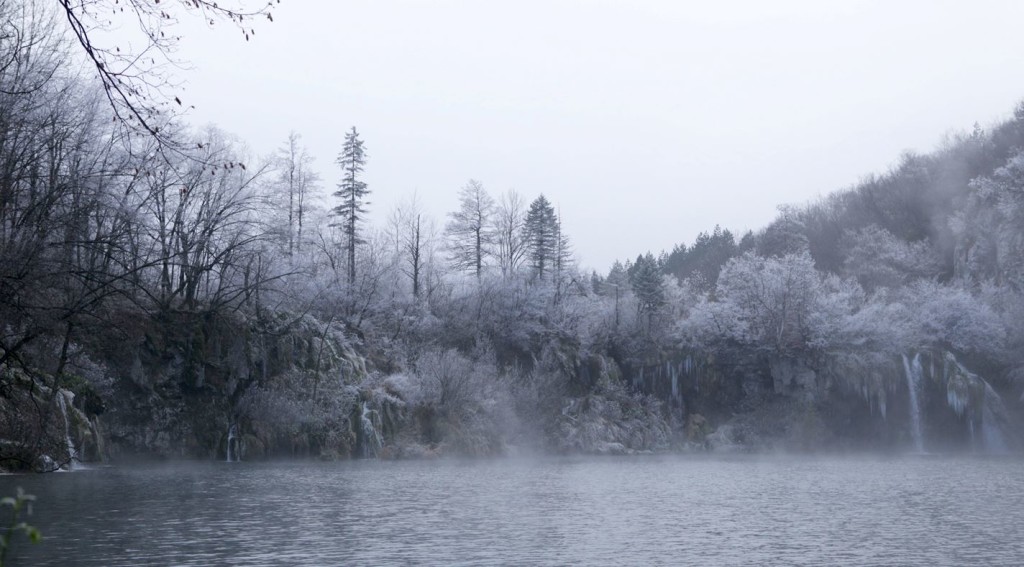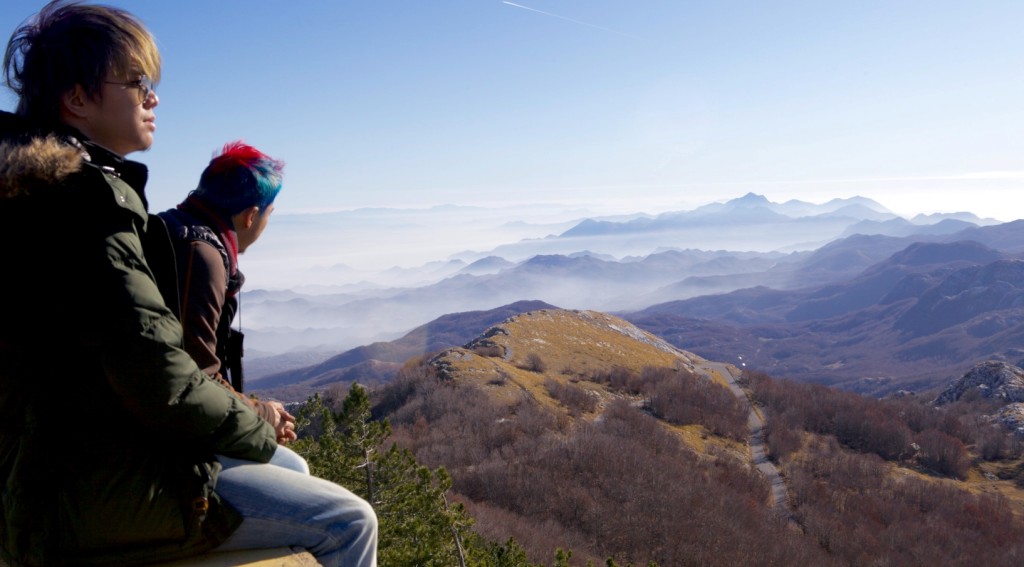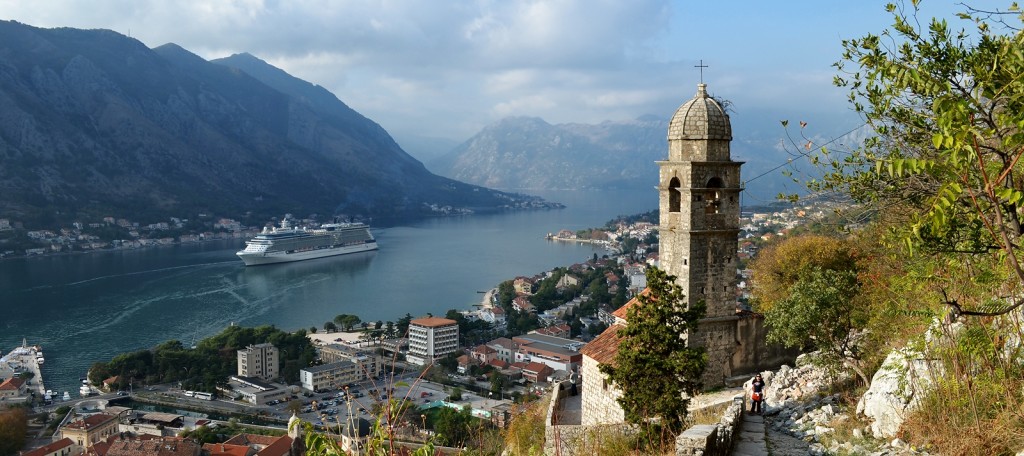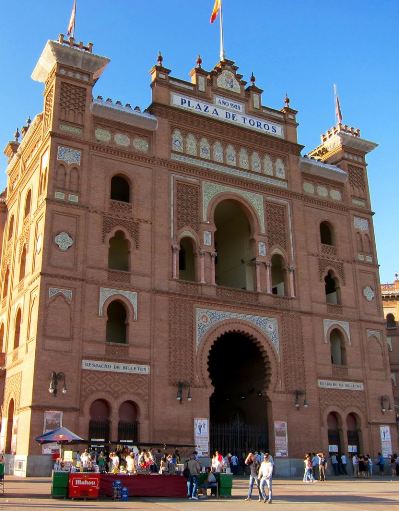
Located in the east of Madrid, in the Salamanca district, Plaza de Toros de Las Ventas is Spain’s most famous bullring. Commonly known as Las Ventas, it is an imposing structure of red bricks and ceramic tiles.
I was “fortunate” enough to be in Madrid during the bull fighting season (which starts in March and runs through to October).
A couple of days before this, at a tapas bar, I overheard a news bite of how Matador Serafin Marin slayed 6 bulls to end 600 years of history in Barcelona. Catalunya had instituted a ban on bull fighting and as of that corrida there will be no more killing bulls for sport in any Catalonian territories. That had spurred me to experience a bullfight, at least once in my lifetime, before the Spanish tradition vanished from the face of the earth.
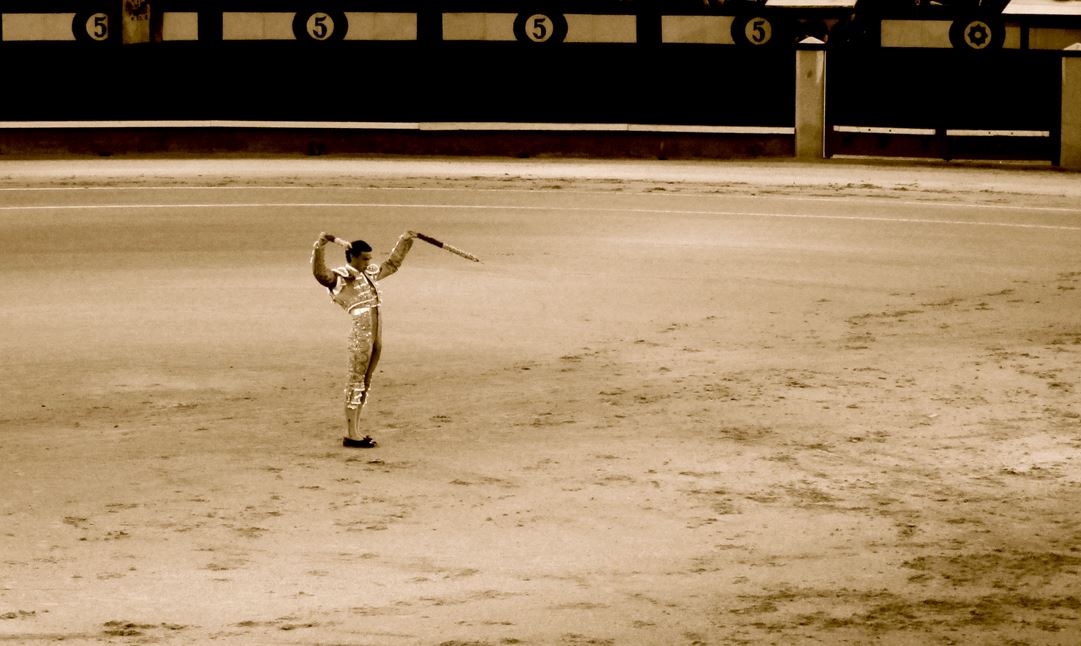
Tickets
Getting to the plaza de toros was easy enough. There was a metro station directly in front of complex (Lines 2 or 5 – Las Ventas station). Tickets can be bought at the ticketing booth or online. Bullfights are held every Sunday or holiday and lasts between two to three hours. The Spanish style of bullfighting, called corrida de toros which literally translates to “running of bulls”, is colloquially referred to as corridas.
I risked the ticket booth for two reasons; This was a last minute impulse decision and it was the middle of the peak season so I didn’t expect the arena to be booked out. Ticket prices varied by how far you are from the arena (the closer you are the more expensive) and also whether your seat is in the shade (sombra) or in the sun (sol). The shaded seats are significantly pricier than the others, but it all mattered little to me as during that time the sun would have firmly set by the time the festival started.
On the opposite side of the road (Calle de Alcala) there was a string of eager eateries, all anticipating the coin of hungry tourist, who came in throngs to watch the bullfights. I had a quick dinner here before proceeding into the arena.
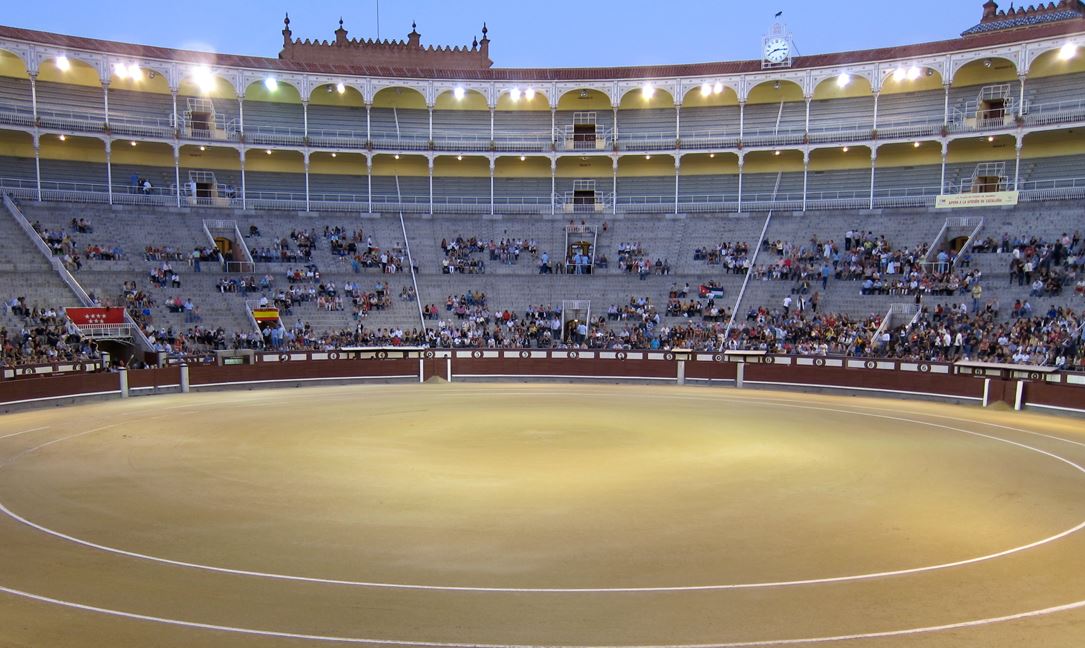
The First Corrida
I found my “seat” and settled in. They weren’t so much seats as a stone benches with seat numbers carved in. The arena was a perfect circle of sand with dual white rings and numbers running the circumference. White pillars supported the terraces, which were decorated with awnings just under the roof. A large clock pointed to 8.15pm.
15 minutes later a bugle called out and the players in this elaborate dance of death entered in a parade- The Toreros (bullfighters) in their colorful garb, along with the matadors in their gold traje de luces or suit of lights. I was excited at this point, this was after all my first bullfight.
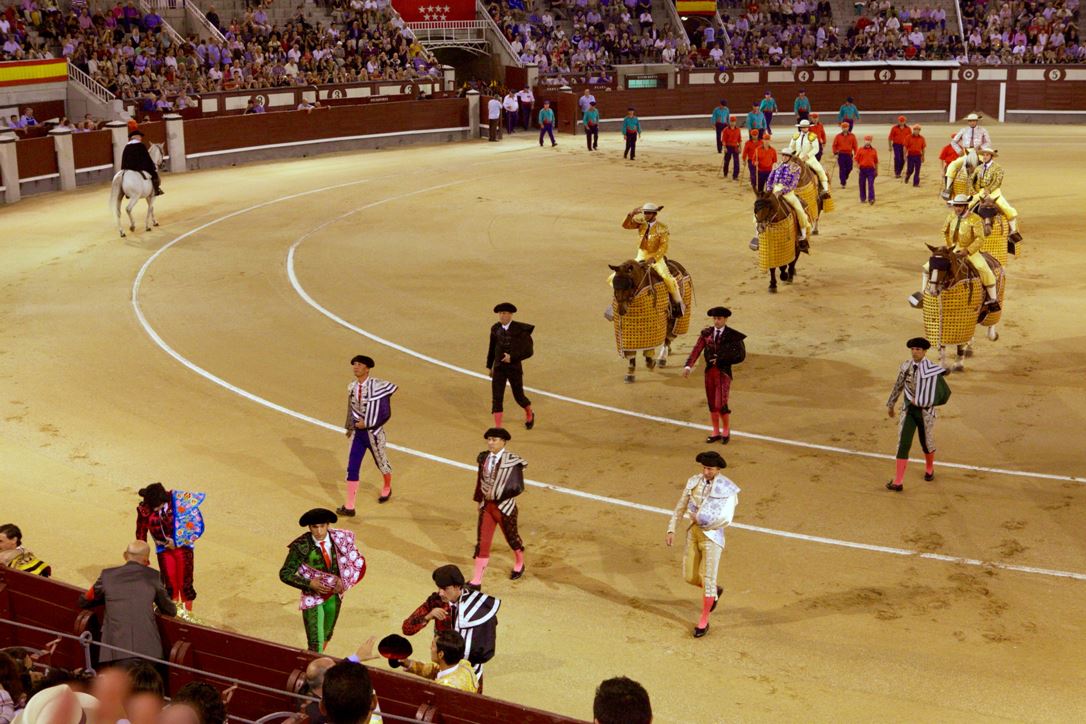
There are three ritualized stages to a fight:
- Tercio de Varas where the bull’s behavior is observed by the Matador whilst the lancers on horseback strike at the back of the bull’s neck to draw blood.
- Tercio de Banderillas where the lesser bullfighters attempt to plant barbed sticks into the bull’s shoulder.
- Tercio de Muerte where the matador brandishes his red cape to tire, enticing the bull into a series of passes, tiring the beast out before brandishing his sword for the fatal blow. Stabbing the bull through the shoulders, piercing the heart. If unsuccessful the matador would try repeatedly till the bull has fallen.
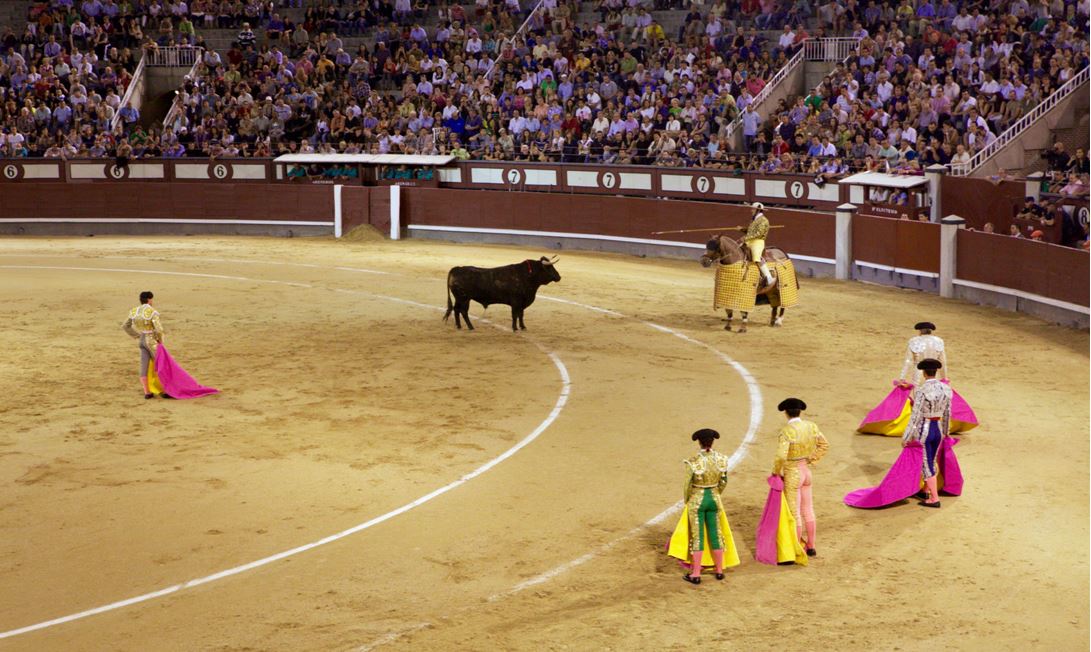
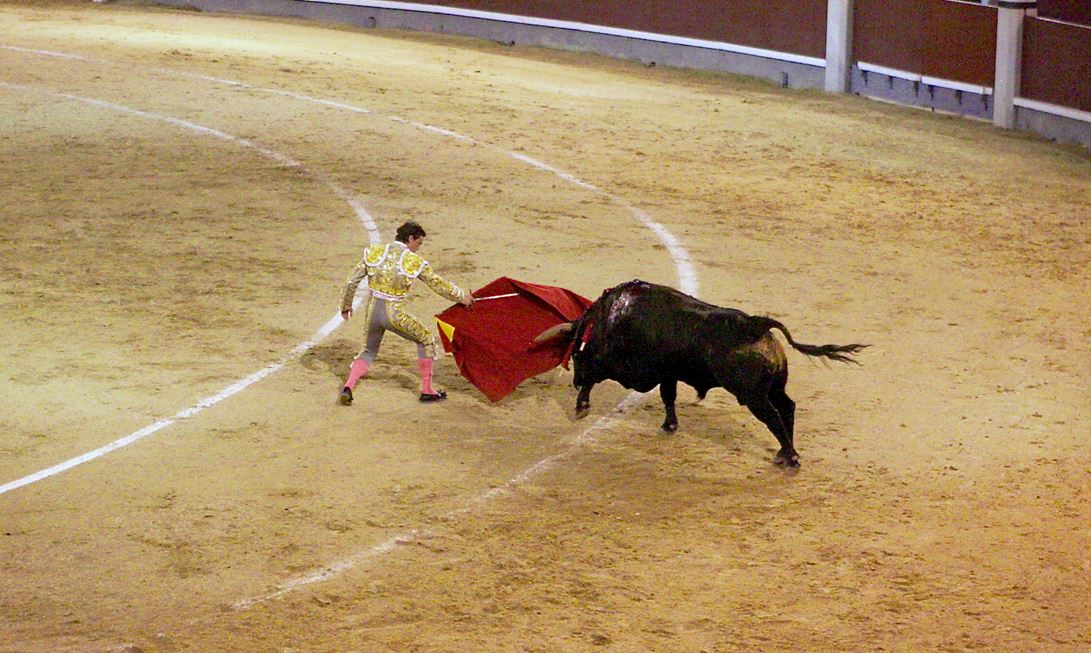
Ole!
It was the last stage of the first bullfight and already I was overcome with confusing emotions. An uncomfortable mix of exhilaration and disgust ran through my body. Cheers of “OLE!” rang out each time the bull made a pass and unconsciously I cried out with them. Driven by hysteria and at the same time shamed by the gut wrenching display of cruelty before me.
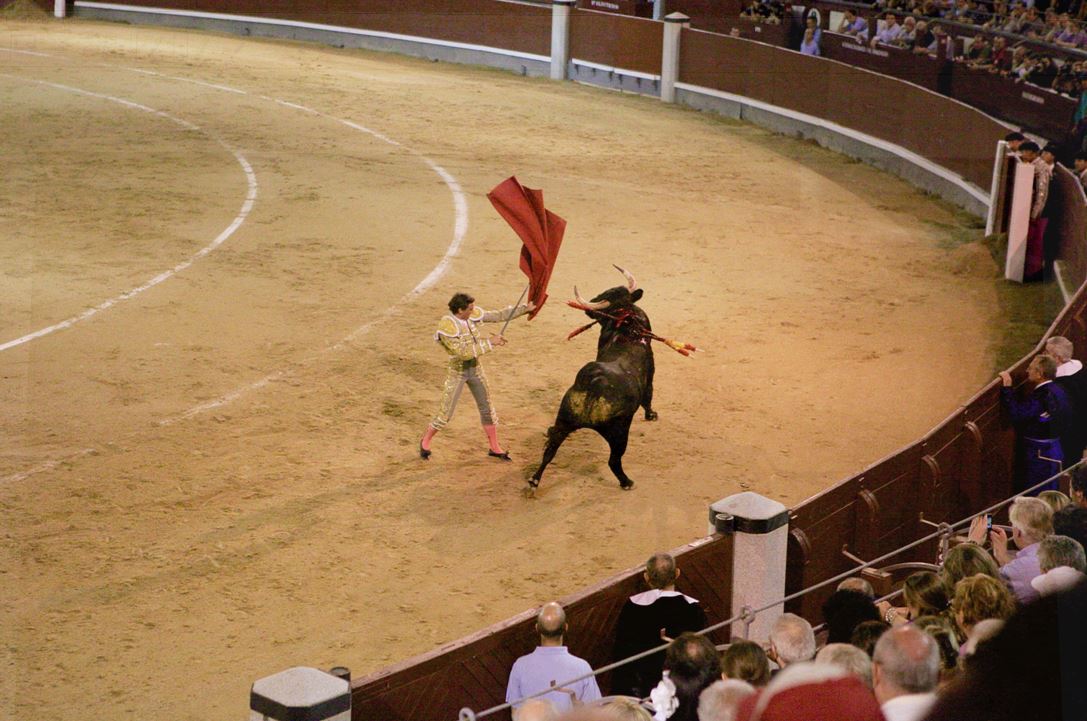
The Matador faced off with the bull, so tired from its exertions and the loss of blood and for a moment time stood still as both foes sized up the inevitability of the situation. The Matador, proud postured, shouted out a taunt and the beast lowered his head for the final act. It charged forward towards the cape as the Matador slid out of the way and plunged the sword deep and true. Life passed from the bull as it collapsed, mid charge, in a heap.
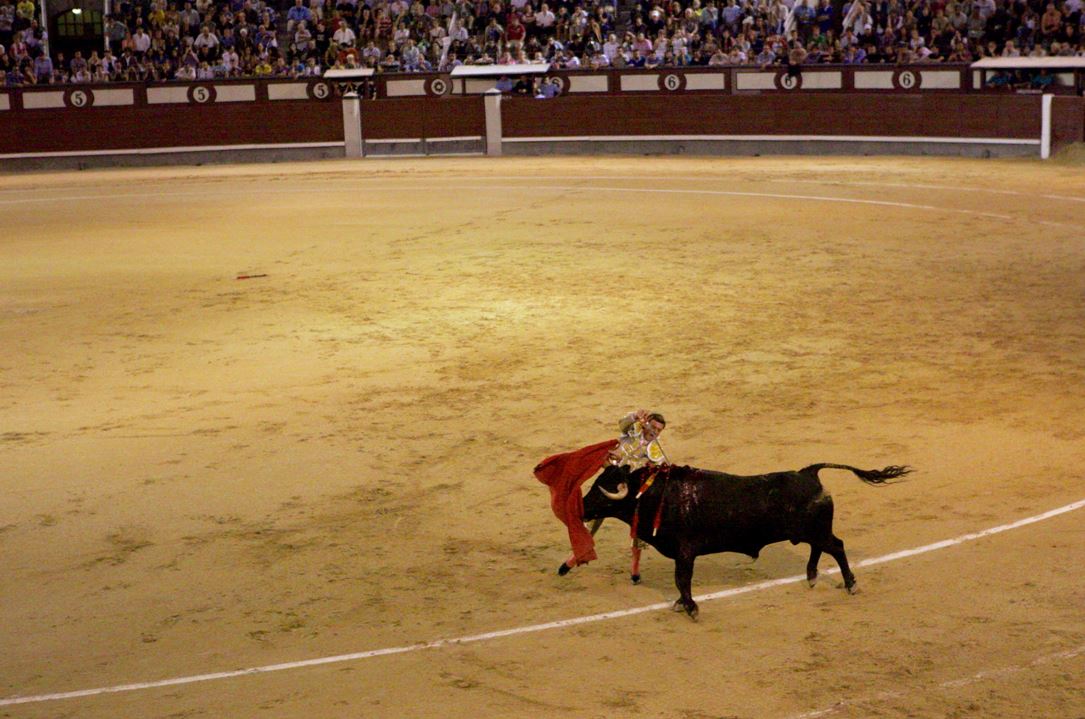
Victory music blared as they hooked the dead bull up to a squad of donkeys and unceremoniously dragged the bull out of the arena.
I was gutted.
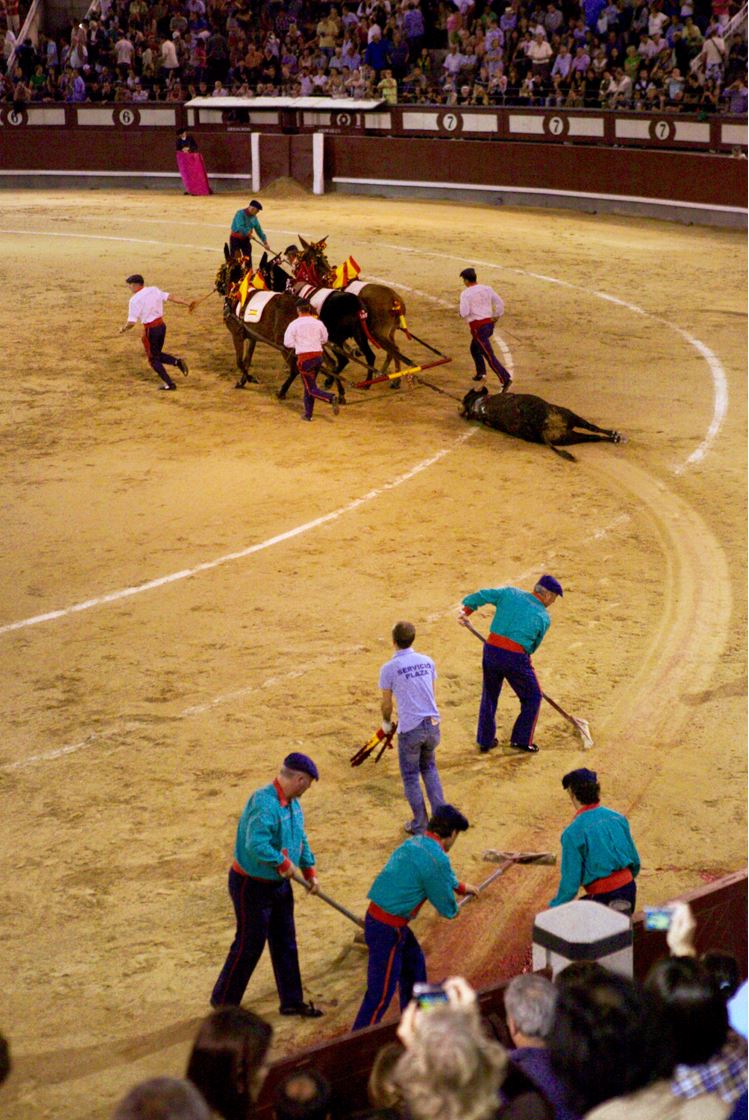
I spent the next two corridas (The bull had charged the Matador in the second bout and she had to be stretchered off, replaced later by a different matador) arguing for both ethics and art form in my head. I still hadn’t figured out how these magnificent beasts had sacrificed its life for my entertainment – oh and what entertainment it was. Such a torrent of emotions, overwhelming the senses.
Will I return again? No.
- Nice, The French Riviera, France - November 11, 2015
- The Tsukiji Fish Market Tuna Auction Experience - October 25, 2015
- The Sandstone Peaks of Meteora (Greece) - September 28, 2015
